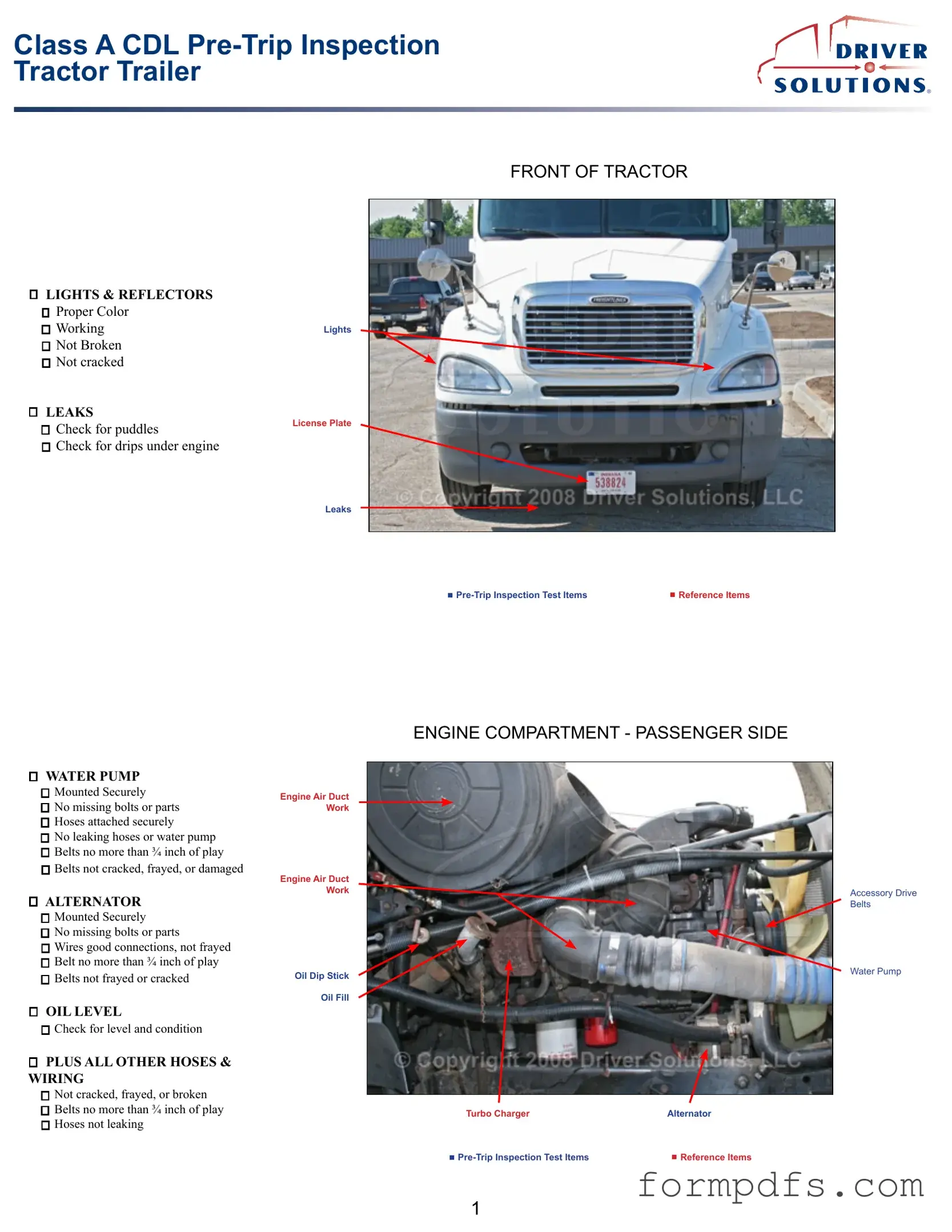What is a Pre Trip Inspection Checklist?
A Pre Trip Inspection Checklist is a tool used by drivers, especially those operating commercial vehicles, to ensure that their vehicle is safe and roadworthy before embarking on a trip. This checklist typically covers various aspects of the vehicle, including brakes, lights, tires, and other critical systems that affect safety and performance.
Why is a Pre Trip Inspection important?
Conducting a Pre Trip Inspection is vital for ensuring the safety of the driver, passengers, and other road users. It helps identify any mechanical issues that could lead to accidents or breakdowns. Additionally, thorough inspections can help avoid costly repairs and legal issues related to vehicle safety compliance.
Who is required to complete a Pre Trip Inspection?
Generally, commercial drivers, including truck drivers and bus operators, are required by law to complete a Pre Trip Inspection. However, it is also a good practice for personal vehicle owners to conduct similar checks to enhance safety and reliability.
What items are typically included in the checklist?
The checklist usually includes items such as checking the brakes, lights, tires, fluid levels, mirrors, and windshield wipers. It may also cover the condition of the battery, exhaust system, and any safety equipment like fire extinguishers and first aid kits. Each item is crucial for ensuring the vehicle operates safely.
How often should a Pre Trip Inspection be performed?
A Pre Trip Inspection should be performed before every trip, especially for commercial vehicles. Regular inspections help catch potential problems early, ensuring the vehicle remains in good working condition. For personal vehicles, it’s advisable to conduct these checks periodically, particularly before long journeys.
What should I do if I find a problem during the inspection?
If you discover any issues during the inspection, it’s essential to address them immediately. Depending on the severity of the problem, you may need to repair the issue yourself or seek professional help. Do not drive the vehicle until all safety concerns are resolved, as this could lead to dangerous situations on the road.
Can I use a digital checklist instead of a paper one?
Yes, using a digital checklist can be a convenient and efficient option. Many drivers prefer apps that allow them to complete inspections on their smartphones or tablets. Digital checklists can also help keep records organized and easily accessible, which is beneficial for compliance and review purposes.
What happens if I fail to perform a Pre Trip Inspection?
Failing to conduct a Pre Trip Inspection can lead to serious consequences. For commercial drivers, it may result in fines, penalties, or even suspension of driving privileges. Moreover, neglecting this crucial step can put lives at risk due to potential mechanical failures while on the road.
Is there a standard format for a Pre Trip Inspection Checklist?
While there is no single standard format for a Pre Trip Inspection Checklist, many organizations provide templates that cover essential inspection areas. Drivers and companies can customize checklists based on specific vehicle types and operational needs. The key is to ensure that all critical components are included and thoroughly checked.
